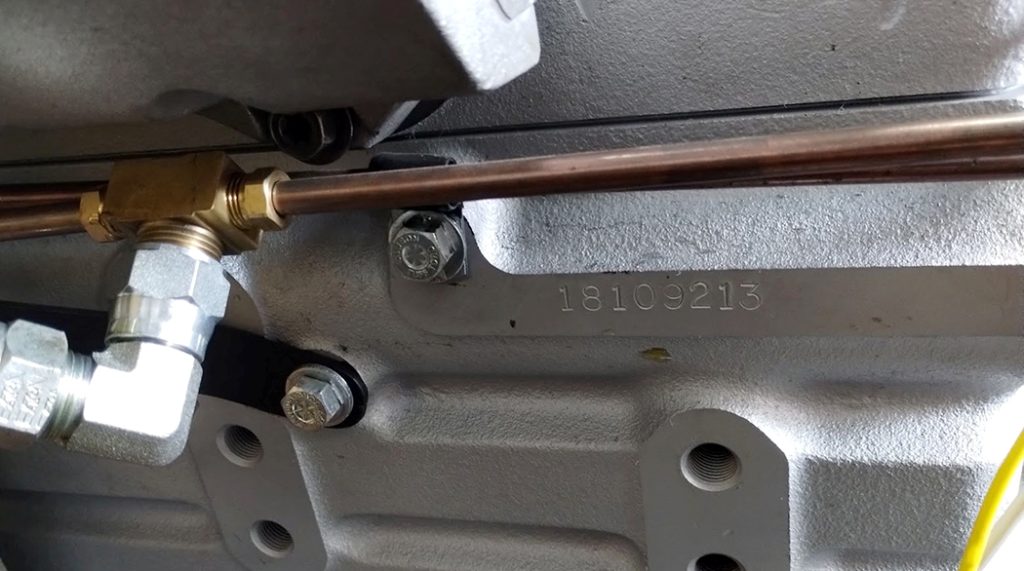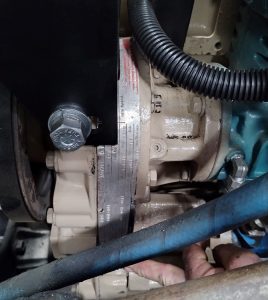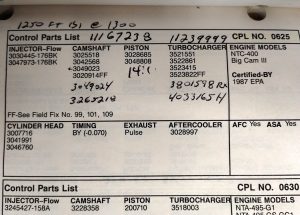
We are often asked, “What is different about your Max Mileage Fuel Borne Catalyst (FBC) and other fuel additives – and why do I need both? Our Max Mileage FBC contains a catalyst chemistry as an active ingredient. This catalyst is approved by the US EPA for use in all road fuels. Max Mileage FBC has been independently tested using EPA certified methods for measuring fuel consumption and was shown to increase engine efficiency by 12-14%. Yes, that’s correct! Under controlled engine conditions of fixed speed and applied load, a 15L Cummins test engine produced the same amount of horsepower while using 12-14% less diesel fuel.
This is the direct result of the Max Mileage FBC causing the combustion reaction to proceed faster and burn fuel more completely, thus releasing more heat during the power stroke of the piston. More force is produced while the piston is still moving. This translates to more work being produced by the engine for the same amount of fuel burned. And because the fuel is being burned more completely, Max Mileage FBC also results in fewer toxic emissions being generated in the form of unburned fuel, soot, smoke and carbon deposits, all of which can cause problems with premature engine wear, DPF clogging, and more frequent engine component repairs and/or replacement.
Max Mileage FBC is widely available as an aftermarket product for the trucking industry and stands alone as the proven leader for all but eliminating DPF regeneration problems. In contrast, there are perhaps hundreds of other types of fuel additive products available. These come in the form of cetane or octane improvers, fuel lubricants, detergents or anti-stiction agents, emulsifiers or surfactants, anti-gelling or de-icing agents, antioxidants, or fuel stabilizers. It’s important to recognize that each is a different type of chemical that targets different aspects of fuel properties. Most are aimed at improving a specific fuel property as a remedy for related issues. As an example, emergency de-ice products will melt any ice crystals that block fuel filters.
Many of these additive chemicals are combined in formulas that are marketed as multi-functional blends. The product advertising often includes claims of better fuel economy. Indeed, a number of these multi-functional fuel additive blends may indirectly improve fuel efficiency, either by improving fuel ignition properties or by reducing friction, or by simply restoring the gradual loss of fuel economy that occurs with the formation of engine and fuel injector deposits. All of these products can and should be used along with Max Mileage FBC for better protection against problems caused by today’s fuels.
However, unlike Max Mileage FBC, none of these other types of additives, when used alone, will likely show any statistically significant increase in fuel economy under a controlled engine test. That comes down to one reason and one reason only – these other types of fuel additives, while beneficial, do not work to increase the rate of the combustion reaction directly. That is something that can only be accomplished through the use of Max Mileage FBC.
Switching gears, let’s talk about Big Cam Cummins engines. We get a lot of calls from people who want to upgrade the power of their Big Cam, but they do not have any details on the engine, other than that it is a Big Cam Cummins. If you do not know the engine’s specifics, then there is no way we can tell you what Pittsburgh Power can do for you. The more information you can give about your engine the better! The two most important pieces of information from these engines are the Control Parts List (CPL) and Engine Serial Number (ESN). We can get the CPL number from the serial number if you don’t have it. Both the CPL and ESN are on a tag that is located on the part of the block that the accessory drive mounts to. If you don’t have a tag in that location, which happens often, you can get the engine serial number off the block on the left side of the engine below the 3rd head (see photo). With the ESN, we can pull up the CPL and get everything we need to direct you to the best solutions for your engine.
Over the past 40-plus years, we have added helpful notes to our CPL book, outlining different parts that work best for each CPL listed. The CPL tells us what injectors, pistons, turbo, cam and the timing that are specific to this particular engine. These are the things that make a difference in what we can do with your engine, and depending on how deep you want to go, it can also affect what we can do.
If you have a lower-power CPL and are rebuilding it, we can put together a kit of parts to make your engine a great running Big Cam, but it can get tricky if you are not doing a rebuild. If your CPL has the wrong piston compression ratio, wrong timing, turbo, and injectors, we can only do up to what you are willing to change. If you are willing to change these parts, we have a large collection in stock to choose from that can increase power. If you don’t want to change these parts, we can only go so far safely.
We are more than willing to answer your questions, but please be prepared with the information we need to help you. No matter what you have, we can make an improvement you will be happy with. I would like to thank Jane Gates for putting together the portion about FBC and additives, and Brian Moan for the portion about Big Cam engines. Jane is the inventor of the Max Mileage product, and she is well-educated in these types of products, and Brian has been with Pittsburgh Power for over 35 years, working on the Big Cam Cummins since the beginning. If you have questions, feel free to stop by our shop in Saxonburg, PA, call (724) 360-4080, or visit us online anytime at www.pittsburghpower.com. Have a great month!


